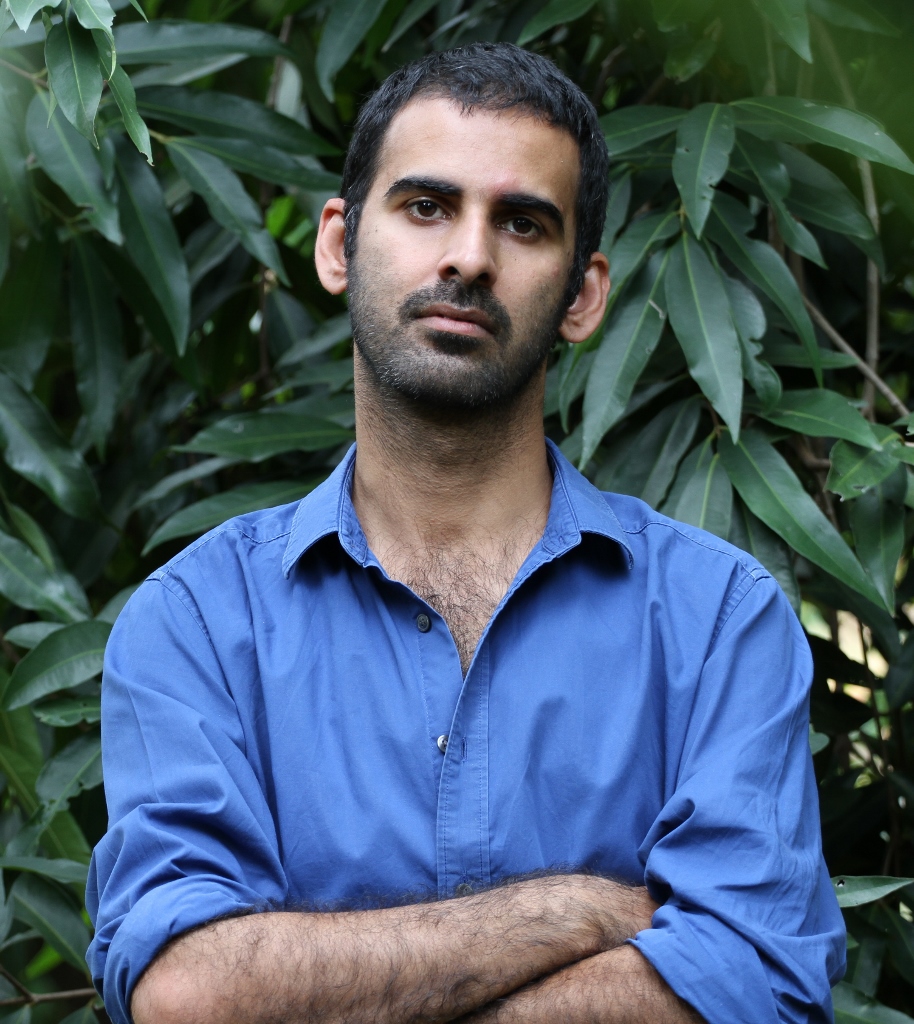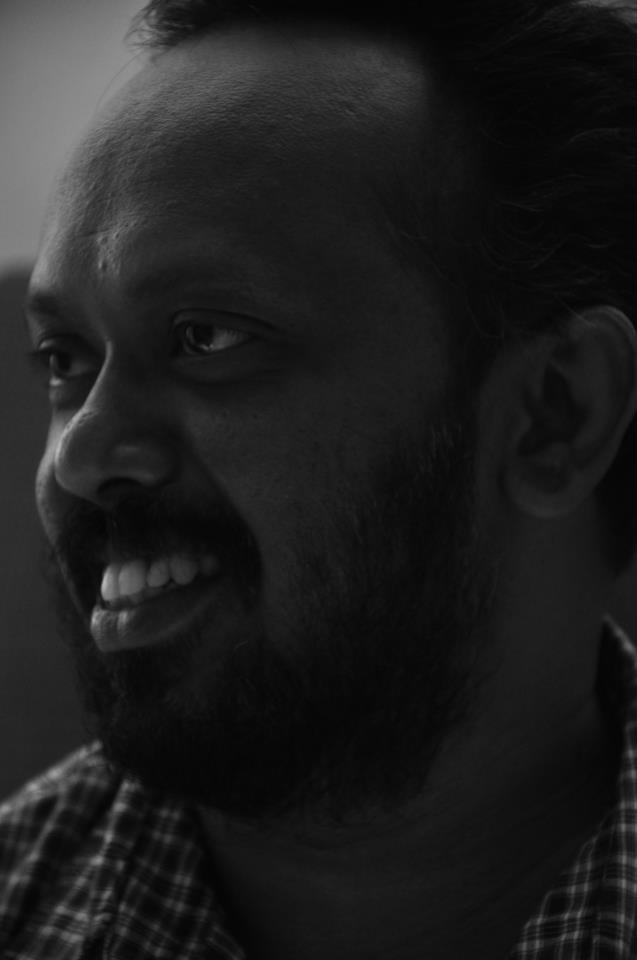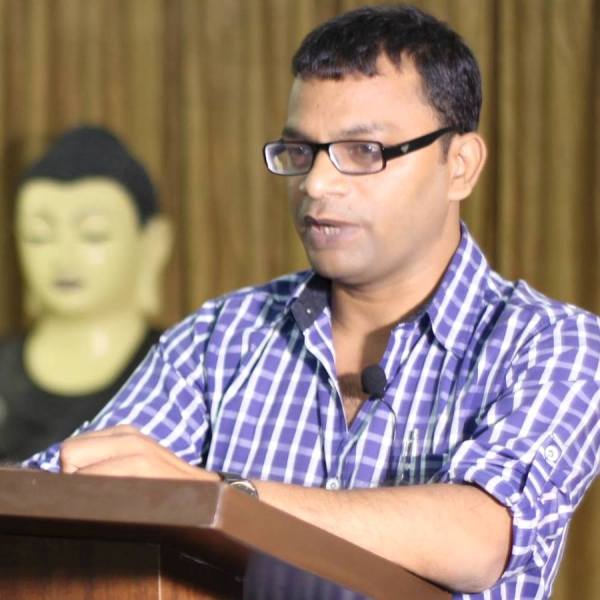Akshay Pathak
 बड़ा हुआ तो क्या हुआ जैसे पेड़ खजूर
बड़ा हुआ तो क्या हुआ जैसे पेड़ खजूर
पंथी को छाया नहीं फल लागे अति दूर
~ कबीर
Of what use is stature, much like a date tree,
Offers no shade for travellers, its fruit beyond reach.
~ Kabir
May in Bikaner is a very hot and dry month. But regular gusts of dust-laden winds breathe life into the sun-filled days. The dogs, leading rather imperilled lives, lord over time, either stretched out on a wet patch by the road or standing guard to attack a passing motorbike. Occasionally, they disperse at the sight of a stone in the hands of some bratty boy. In this town, afternoons hang lazily, like defunct clocks in museums.
On such summer afternoons, lost in thought, my palms moist with sweat, I would begin to randomly re-read Arundhati Roy’s The God of Small Things. The book that meant more to me than the first kiss of a lover. To many like me, children of middle-class families, with savarna Hindu names and all that comes with them, Arundhati Roy’s subsequent political and polemical writings were eye-openers. Our boring, comfortable, mediocre, and deluded lives were as if given a reality-check. Along with a little packet of hope in the shape of well rounded lyric that often came as a freebie hidden in the mass-produced chunks of fine paper. She annoyed everyone whose politics I could not stand and that in itself became a reason for fascination for a rebellious young boy of sixteen.
I would resist calling myself a fan. I must confess, however, that I began reading her with some zeal. In her famous speech Come September, she laid out her philosophy succinctly. “The theme of much of what I write,” she said, “is the relationship between power and powerlessness and the endless, circular conflict they’re engaged in.” I was in love. With her words. Armed with these polemics I marched into the big bad world, ready to talk about and, when it suited me, take on injustice, even if it meant pinching paisas from my paltry income at the time to buy her latest book. But things, as even Estha and Rahel found out, can change in a day.
~
After tantalising us for several months now, on March 1, the publisher of Navayana, S. Anand, a fine and fiery writer himself, and a personal friend, finally broke the suspense he was building for a lot of us who spend a ridiculously huge amount of time on social media. The Annotated Critical Edition of Dr Ambedkar’s Annihilation of Caste, the speech that was never given. But the surprise here was the 200-page-long introduction by none other than Arundhati Roy, the Goddess of Fighting the Status Quo. Never mind that the speech is freely available for download on the internet or sold for less than 50 rupees along with other brilliant writings of Dr Ambedkar at book-stalls at railway stations to stationary-cum-book shops in small towns. But the mischievous ghost of capitalism seems to have come knocking on Arundhati Roy’s door one night, as it does on all our doors to make us pay our hafta. The same ghost that found its way into her ink and pen (as on previous occasions when she must have written her crushing words), and polished her words to lend them, this time around, a price tag of Rs. 525. Available at book stores and online if you can pay by credit-card or debit-card or internet banking, all provided by CCAvenue Customer Service which ‘provides the service on behalf of the merchant site Navayana.org.’ This offers you a discount (yay!) too.
Excerpts of the essay meanwhile appeared in the premier journals and magazines: Outlook, Caravan, The Hindu. A frenzy of activity was unleashed on social media. Some of us did get excited at first, many still feel the same. But slowly as the days unfolded, other opposing voices were heard and some like me had to reassess our own sense of jubilation. Usually tagged as an anti-national for her radical views, Arundhati Roy managed the amazing task of uniting this nation, yet again, in piling their scorn on her. Though eventually one saw the emergence of a whole army of soldiers coming to her defence. As the tongue made its way to my cheek, I began to wonder if she were a nation unto herself. Though largely praised for this ‘valiant’ effort by the liberal minded, criticisms emerged from all corners, from both the left and right (whatever that means in the Indian political scenario today) , from Gandhians who came up with their usual defence of the Mahatma and Ambedkarites and Dalits who felt offended, rightly so, at reducing Babasaheb’s relevance yet again by positing him with Gandhi. All this, particularly the voices at this same portal I am writing on, brought forth some very pertinent points. To borrow someone’s style I shall attempt to sum up what I found to be of most significance:
We live in a nation ruled by dominant caste and upper class leaders. We watch television channels owned by dominant caste tycoons, watch debates anchored by dofminant caste anchors . We read books written, published, sold by dominant caste and class writers and publishers. We are a nation for the privileged castes and classes. Namak hum jale par abhi bhi chidakte hain. (We still sprinkle salt on others’ wounds). The siege, we must always remember, began thousands of years ago.
But who will cast those stones? Not me, with my Brahmin name and the filthy privilege and power that it comes with.
~
Photo Courtesy: Thenmozhi Soundararajan
The comfortable, complacent liberal mind will immediately spot shades of radicalism in my argument. Ironic, for we are talking about Arundhati Roy- the high-priestess of radical polemic- and moreover radicalism cannot be set aside for dubious notions of Freedom of Expression. This is not just about reporting on a resistance movement or bringing to light gross injustices that the privileged might be perpetrating here and now that need immediate attention. There is a whole historical context to ‘lending voices’ to those who have been denied something as basic as language. The Dalit movement has fought against the very notion of who speaks for them, where and how. Our privilege to talk about Freedom of Expression, our ability to enjoy that so-called freedom often inadvertently comes at a cost to millions of others. And if we remember what an earlier sermon taught us: “We know” (do we?) that “there’s really no such thing as the ‘voiceless’. There are only the deliberately silenced, or the preferably unheard.”
Paradoxically, around the same time that the book was unveiled, with its promise to bring Dr Ambedkar to savarna Hindus, white and other ignorant readers, a fantastic event was underway. The Dalit Mahila Swabhiman Yatra (The Dalit Women’s Self-respect March) a ‘month-long (February 17 to March 13, 2014) journey of Dalit activists’ through Delhi and the villages around it, Haryana, Punjab, UP, Bihar, Orissa and Maharashtra.
The yatra, which is still in progress, is being held with the aim to ‘seek accountability of institutions and mechanisms mandated to protect Dalit women; to ‘seek to end impunity and crack injustice.’ This historic moment, as expected, does not feature even in news reports or get pages in the very magazines that have extensive passages from Arundhati Roy’s essay.
Meanwhile, privileged India is gearing up to buy and read or decorate their drawing rooms with the annotated critical edition brought out by Navayana. The same people who, in an attempt at farcical social reform, according to Arundhati Roy’s introduction to the book “brought [the Untouchables] into the big house, but kept [them] in the servants’ quarters.”
There is an unmistakable and sinister irony in the fact that it takes a celebrity and extremely privileged writer, though with some strong credentials of having stood up against injustice, and having faced trouble for that too, to be ‘strategically’ used by a publisher as a PR agent for a man who means the world to the most discriminated-against people in India. This is not to be blamed on her but we do extend that logic to every symbol of power in this horribly unequal world. When the noose of moral choice is tightened by a writer like Roy on almost every symbol of unbridled power, it is a moment of sadness for someone who admires her to witness these double standards. That she forgets the clear hijacking of a text so pertinent. That she, by painting herself as the brave one, however ‘reluctantly’, challenging the status of a ‘Mahatma’ comes across as vying for attention.
Read the introduction and critique the essay is what one would be told. The rule of the neo-brahmin: Blame or question the shastra not the shastri? Where have we heard that before? But indeed a more intelligent and intellectual interrogation of her essay will surely follow. I am neither an expert nor the right person to do it. But as someone who might share the drawing room space where this discussion might happen, I felt the need to flag these concerns.
Roy points out her discomfort at Dr Ambedkar’s views on adivasis and so one is also compelled to ask her: Does she not realize the terrible symbolism- of her coming to the ‘rescue’ of Dr. Ambedkar’s legacy- in what this attempt on her part means? And even if she does and acknowledges it, however slanting, in her interview in Outlook (Yes, we have not just been blessed with the essay but there is a whole marketing blitz around this event which has completely sidelined the actual text of AoC!) One wonders would she not have considered what this means to the many Dalit Bahujans who are the brave inheritors and crusaders fighting the battle that Babasaheb fought so bravely? Not that one wants to gag ‘free speech’ or decide who can and cannot talk about Dr Ambedkar but this is about representation. Even when done with the best of intentions (which in itself sounds patronizing), it has far-reaching implications. It is a sad moment when a writer who has never shied away from pointing out the evils of structural injustice, becomes the very symbol of that same structure. And does it with some unhidden hubris. In the interview to Outlook she says, “Many Dalits and Dalit scholars have, over the decades, been very sharply critical of Gandhi and Gandhism. Having said that, if this book begins another debate, a real (emphasis mine) debate, it can only be a good thing. I think it’s high time that there was one.” So the ‘real’ debate must now begin for the ‘fake’ voices have not made the cut to this ‘premiere’ of the star-studded extravaganza?
As Anoop Kumar, someone who has been critiquing (some say attacking) the choice of Arundhati Roy as the ‘messiah’ to bring Dr. Ambedkar to newer readers, points out in a rather angry and relevant article, “I am merely resisting your messiah status now being thrust on us. Just for the simple reason that it is more difficult to dislodge a messiah, a mahatma, than to create one. We spent some seven decades and enormous efforts in dislodging one, thrust on us quite forcefully, by others who also were as persuasive as you are today in claiming that it was only in our best interests.”
Moreover, the implied suggestion that Arundhati Roy will bring Dr Ambedkar to the world, is a horrible insult to a great figure like Babasaheb. That he needs an Arundhati Roy. Whereas it is by now evident that the opposite is the case: Arundhati Roy arguably comes out as the dominating face, unwittingly perhaps, in this whole episode, as she travels around the country giving interviews, talks, posing for photo-ops while Dr Ambedkar’s picture on the cover of the plushly produced book in question stares at us, perhaps somewhat perplexed at the whole deal. In what sounds slightly megalomaniacal and very similar to the man she indicts in her introduction to the book- Gandhi- she tells the India pages of the New York Times: “I know that when it comes out, a lot is going to happen. But it’s something I need to do.” The NYT piece is a profile on her life and works. What brilliant and opportune timing and what better way to ‘introduce’ Dr. Ambedkar to the U.S of A!
Anoop Kumar concludes quite poignantly by quoting Babasaheb from his discussion with Gandhi in 1931: “History tells that mahatmas like, fleeting phantoms, raise dust but raise no level.”
~
Symbols are inherently powerful. They can bring about revolutions but they can often perpetuate hegemony and continue to maintain the status quo. The large majority of people living under the brutally unjust culture in this broken republic has been denied basic human existence for centuries. Dr Ambedkar is needed urgently, as Arundhati Roy points out, but for whom? He exists in every breath taken by millions and millions of Dalit Bahujans in the country and the world over. It is time perhaps we with our privileges of caste, class etc. and the freedom they afford us- while trampling on others’ freedoms- realized that Dr Ambedkar’s ideas and his message cannot suddenly be celebrated for our own self-loathing, guilty selves, to silence the murmurs of our conscience. We cannot pat our backs for packaging them in a bottle of expensive cologne to be sprinkled on our fancy clothes for an evening of intellectual congress. In the hope that it trickles down. His message is already gushing up from below. I am aware of the irony of my own privilege that has made this very vocabulary I use and where I use it possible. But navigating the slippery slope of freedom, strategic silences could also amount to a form of curbing expression or putting an end to our imaginations. And as I learnt from Ms Roy’s words: Perhaps it is now time that those of us with precious wings on our backs and who have the privilege to talk actually listened to the grasshoppers?
~
Please also read other articles on the same issue:
Introducing Arundhati Roy and Friends: Karthik Navayan
A tale of two prefaces: by Karthick RM
Between Savior and Seller: Critiquing Preface Politics: by Praveena Thaali
A Glass Menagerie for the Bahujans—Annihilation of Caste and Gandhi’s Wards: by James Michael and Akshay Pathak
Stigmatizing Dalits, From the Wadas to the Web: by Nilesh Kumar
Without Arundhati Roy and Gandhi, the book had its own value: Bojja Tharakam
Caste in the Name of Christ: An angry note on the Syrian Christian Caste: by Nidhin Shobhana
The Not-So-Intimate Enemy: The Loss and Erasure of the Self Under Casteism: by Gee Imaan Semmalar
Flaunting noble intentions, nurturing caste privileges: by Asha Kowtal
The Question of Free Speech: by Vaibhav Wasnik
Arundhati Roy replies to Dalit Camera
An Open Letter to Ms. Arundhati Roy: by Dalit Camera
Vedic Chants for the 21st Century
Arundhati Roy’s ‘Introduction’ to Ambedkar: Inside one Misogynistic & Xenophobic Dalit’s mind: by Anoop Kumar
Resisting a messiah: by Anoop Kumar
An Introduction to Anoop Kumar’s “Misogynistic and Xenophobic Rants”: by Vinay Bhat
~~~
Akshay Pathak is a writer based in Pondicherry. He has previously worked in theatre and publishing and has recently been writing regularly on a range of issues. He can be contacted at pathak.akshay@gmail.com
Akshay’s picture courtesy: Anoop Davis.










